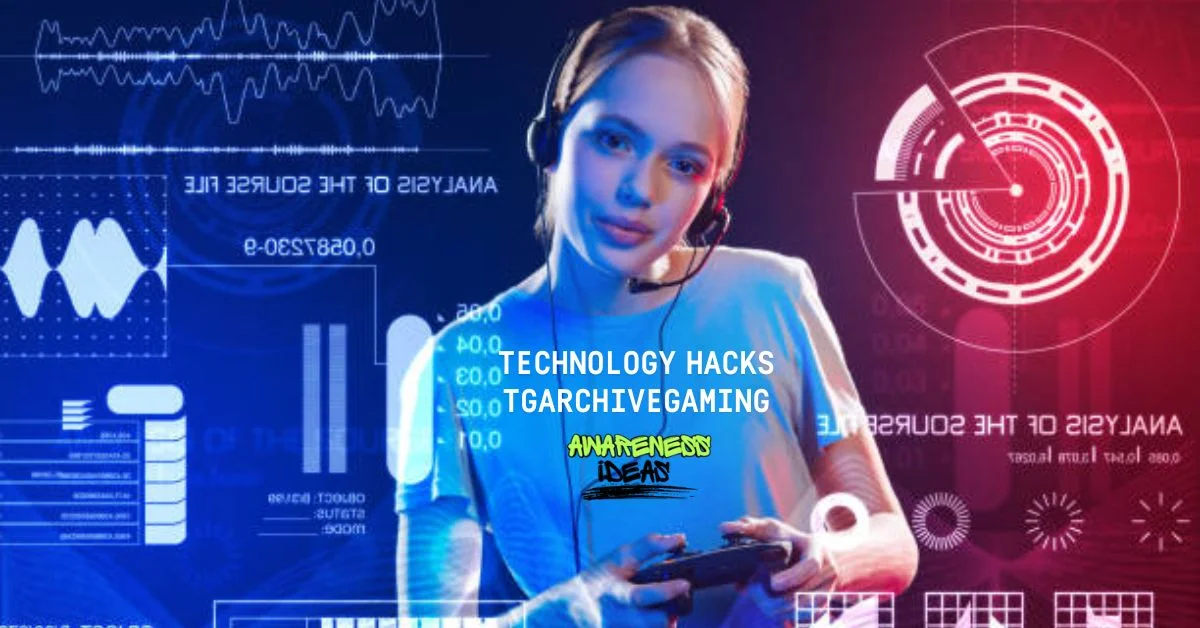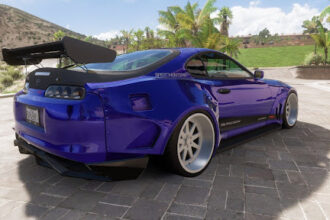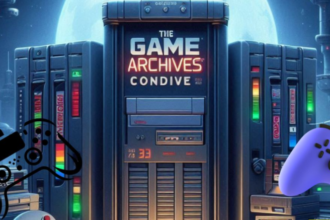Every gamer knows the frustration of being stuck at the same level for weeks, watching friends climb leaderboards while you’re grinding through the same content. The difference between casual players and gaming pros isn’t just skill—it’s knowing the right Technology hacks tgarchivegaming and optimization tricks that can dramatically accelerate your progress.
Whether you’re aiming to dominate competitive matches, speedrun through challenging campaigns, or simply enjoy smoother gameplay, these proven Technology hacks tgarchivegaming will transform your gaming experience. From hardware tweaks that boost performance to software optimizations that give you a competitive edge, you’ll discover practical strategies that professional gamers use to level up faster than ever before.
Hardware Optimizations for Maximum Performance
Overclock Your Graphics Card Safely
Your graphics card is the heart of gaming performance, and overclocking can unlock 10-20% more frames per second without spending a dime. Modern GPUs include built-in safety features that prevent damage, making overclocking more accessible than ever.
Start with MSI Afterburner, the gold standard for GPU overclocking. Gradually increase your memory clock by +100MHz increments, testing stability with each adjustment. Monitor temperatures using built-in sensors—keep your GPU under 83°C for optimal longevity.
For core clock speeds, increase by +25MHz steps until you notice artifacts or crashes, then dial back 50MHz for a stable overclock. This methodical approach ensures you’re pushing performance without risking hardware damage.
Optimize Your RAM for Gaming
Most gamers overlook RAM optimization, but enabling XMP (Extreme Memory Profile) can provide significant performance boosts. Access your BIOS settings during startup and locate the XMP option under memory settings. This simple change allows your RAM to run at its rated speed rather than default conservative timings.
For advanced users, manual RAM tuning can yield even better results. Focus on tightening primary timings (CAS Latency, tRCD, tRP, tRAS) while maintaining stability. A well-tuned 16GB kit running at DDR4-3200 with tight timings often outperforms higher-speed kits with loose timings.
Strategic Storage Solutions
Your storage setup directly impacts loading times and level progression speed. Install your most-played games on an NVMe SSD for lightning-fast load times. Games like “Call of Duty: Warzone” or “Destiny 2” benefit enormously from SSD installation, reducing match loading from minutes to seconds.
Create a tiered storage system: NVMe SSD for active games, SATA SSD for frequently played titles, and traditional hard drives for archived games. This approach maximizes performance while managing costs effectively.
Software Tweaks for Competitive Advantage
Game Mode and Windows Optimizations
Windows 10 and 11 include built-in gaming optimizations that many players never activate. Enable Game Mode through Settings > Gaming > Game Mode to prioritize system resources for your active game. This feature prevents background processes from stealing precious CPU cycles during intense gaming sessions.
Disable Windows visual effects for maximum performance. Navigate to System Properties > Performance Settings and select “Adjust for best performance.” While this makes Windows less visually appealing, the performance gains are substantial on older or mid-range systems.
Network Optimization Secrets
Latency kills competitive gaming performance more than raw internet speed. Configure Quality of Service (QoS) settings on your router to prioritize gaming traffic. Most modern routers include gaming-specific QoS presets that automatically detect and prioritize game packets.
Switch to wired Ethernet connections whenever possible. WiFi introduces variable latency that can cost you critical milliseconds in competitive scenarios. If wireless is necessary, use 5GHz bands and position your gaming setup within direct line-of-sight of your router.
Consider DNS optimization by switching to Cloudflare (1.1.1.1) or Google (8.8.8.8) DNS servers. These often provide faster response times than default ISP DNS servers, reducing the time needed to connect to game servers.
In-Game Settings That Actually Matter
Graphics Settings for Competitive Edge
Professional esports players often run games on lower settings—not because they can’t afford better hardware, but because specific settings provide competitive advantages. Disable motion blur, depth of field, and ambient occlusion to improve visual clarity and reduce input lag.
Reduce texture quality if you’re experiencing frame drops below your monitor’s refresh rate. Consistent frame rates matter more than visual fidelity for competitive gaming. Aim for frame rates at least double your monitor’s refresh rate to minimize input lag.
Shadow quality deserves special attention. While shadows add visual appeal, they’re computationally expensive and can hide enemy movements. Many competitive players run shadows on medium or low settings for better performance and visibility.
Audio Advantages
Audio positioning gives massive advantages in competitive games. Invest in quality headphones and enable spatial audio features. Windows Sonic or Dolby Atmos for Headphones can provide crucial directional information that speakers simply cannot match.
Configure audio settings within games to emphasize important sounds. Many games allow you to boost footstep volume while reducing ambient noise, giving you earlier warning of approaching enemies.
Advanced Technology hacks tgarchivegaming
Custom Resolution and Refresh Rate Settings
Many monitors support custom resolutions and refresh rates beyond their advertised specifications. Use CRU (Custom Resolution Utility) to create custom resolutions that maximize performance while maintaining visual quality.
For competitive gaming, consider slightly reduced resolutions that maintain your aspect ratio while improving frame rates. Running 1800p instead of 4K, or 1440p instead of 1800p can provide the performance headroom needed for consistently high frame rates.
Input Lag Reduction Techniques
Input lag accumulates through multiple sources: monitor response time, wireless peripherals, and system processing delays. Use wired gaming mice and keyboards to eliminate wireless transmission delays. Gaming-specific peripherals often feature 1000Hz polling rates compared to 125Hz on standard devices.
Enable your monitor’s game mode to bypass image processing that adds input lag. Most modern gaming monitors include dedicated low-latency modes that can reduce input lag by 10-30 milliseconds.
Peripheral Optimization
Your gaming peripherals are extensions of your reflexes. Optimize mouse sensitivity using the eDPI calculation: multiply your in-game sensitivity by your mouse DPI. Professional players typically use eDPI values between 800-1200 for first-person shooters, balancing precision with speed.
Mechanical keyboards provide consistent actuation points and faster response times compared to membrane alternatives. Cherry MX Red or Silver switches offer linear response ideal for gaming, while tactile switches like Cherry MX Brown provide feedback without the clicking noise of Blue switches.
Performance Monitoring and Maintenance
Real-Time Performance Tracking
Install MSI Afterburner with RivaTuner Statistics Server to monitor real-time performance metrics during gaming. Track frame rates, GPU usage, temperatures, and RAM usage to identify bottlenecks affecting your gaming experience.
Set up custom overlays showing only essential information to avoid screen clutter. Frame rate, GPU temperature, and CPU usage provide the most actionable data for performance optimization.
Regular Maintenance Routines
Gaming systems accumulate digital debris that degrades performance over time. Schedule monthly maintenance including temporary file cleanup, startup program optimization, and driver updates.
Use Display Driver Uninstaller (DDU) when updating graphics drivers to prevent conflicts between old and new driver versions. This extra step ensures optimal driver performance and prevents mysterious performance drops.
Physical maintenance matters too. Clean dust from GPU fans and case ventilation monthly to maintain optimal thermal performance. Thermal throttling can reduce gaming performance by 20-30% when components overheat.
Level Up Your Gaming Setup
These technology hacks tgarchivegaming represent just the beginning of gaming optimization possibilities. The key is implementing changes systematically, testing each modification’s impact before moving to the next optimization.
Start with the easiest wins: enable XMP, update drivers, and optimize in-game settings. Once you’ve mastered basic optimizations, experiment with overclocking and advanced tweaks that match your technical comfort level.
Remember that the most expensive hardware means nothing without proper optimization. A well-tuned mid-range system often outperforms expensive setups running with default configurations. Focus on maximizing your current hardware’s potential before considering upgrades.
Your journey to gaming excellence combines skill development with technical mastery. These technology hacks tgarchivegaming provide the foundation—now it’s time to put them into practice and start climbing those leaderboards.

















